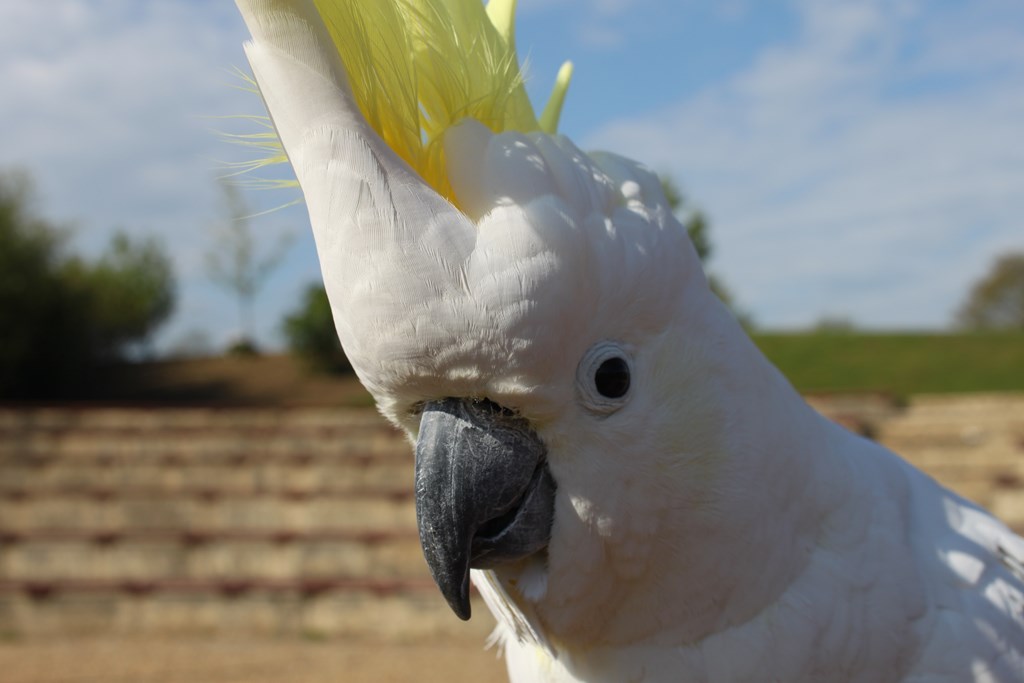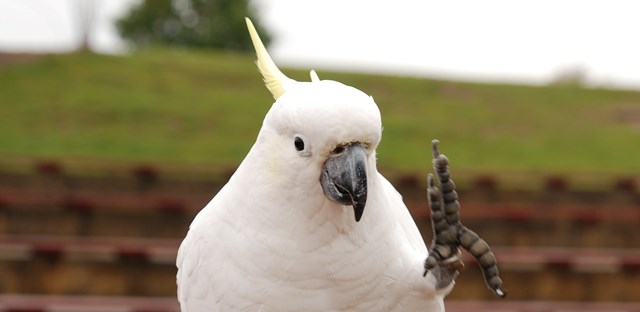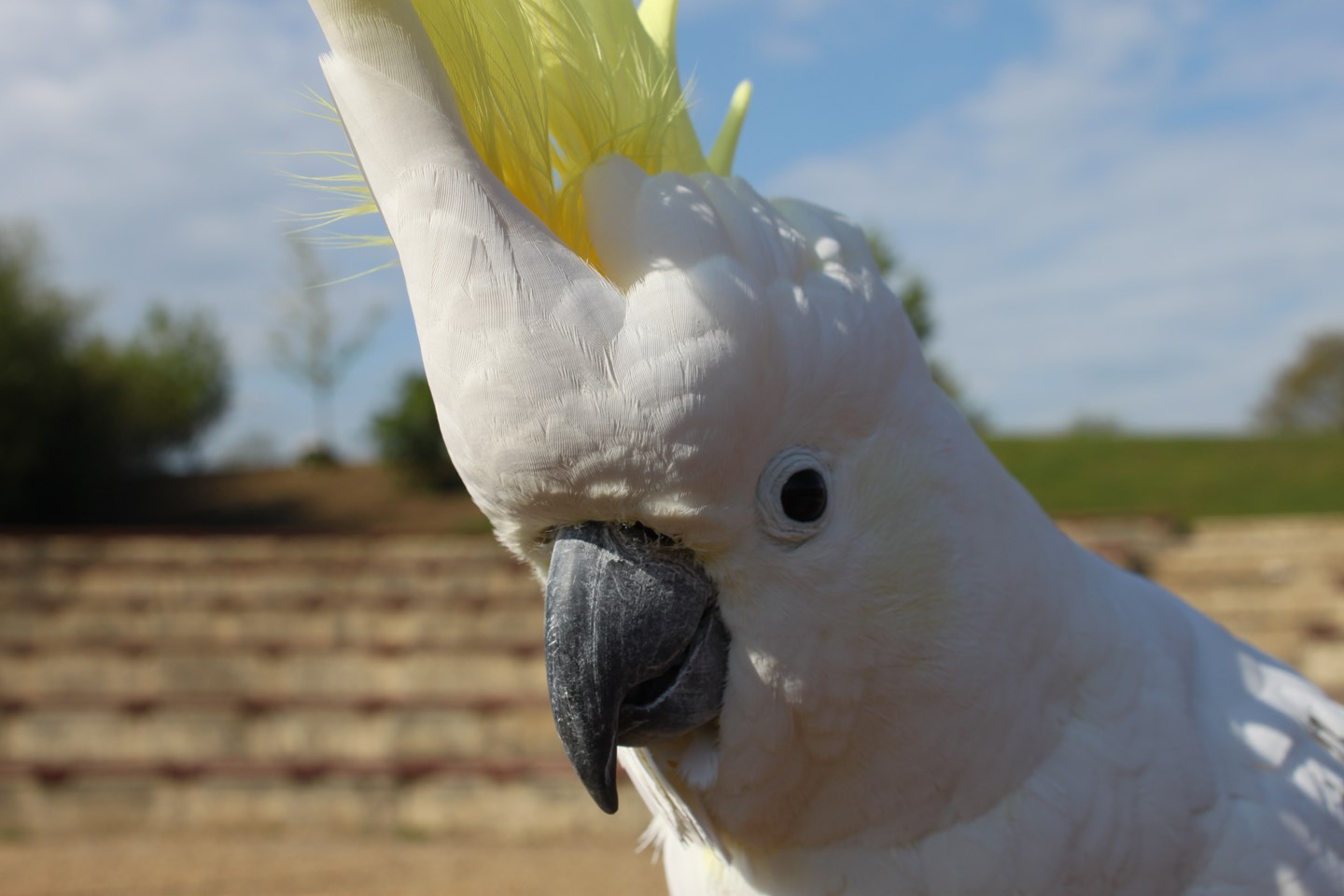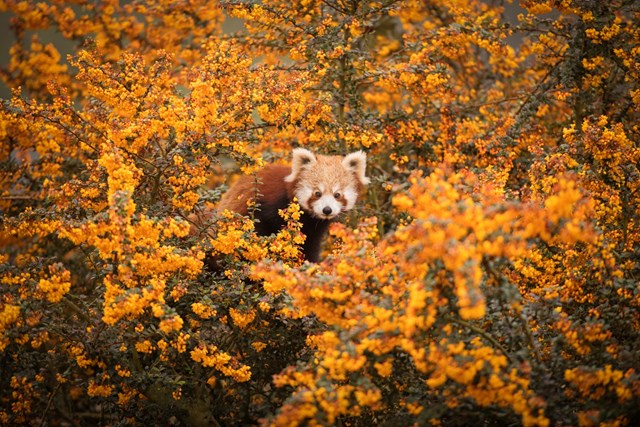Overview
Experience Woburn Safari Park’s free-flying bird demonstration, see these magnificent parrots soaring and swooping in the Birds in Action Amphitheatre in the Foot Safari.
Learn about these intelligent birds, and find out how they adapt and survive in the wild.

All about us
| Distribution: | East coast of Australia, extending along the northern coast and across the seas into Papua New Guinea |
|---|---|
| Habitat: | Open woodland and forest areas |
| Height: | Length 50 cm |
| Weight: | 700-950 grams |
| Lifespan: | Up to 60 years |
| Threats: | Birds are routinely persecuted as crop pests |
About us
Scientific name: Cacatua galerita
The greater sulphur crested cockatoo's plumage is overall white, while the under wing and tail are sulphur yellow. The expressive crest is yellow. The bill (beak) is black, the legs are grey, the eye-ring is white and the base of feathers around cheeks and throat are also yellowish.
These birds typically feed on various seeds, nuts and fruits, such as papaya, durian, langsat and rambutan. They are often viewed as pests in some states of Australia because of their habit of damaging and digging up newly sown seed and raiding ripening crops.
Cockatoo’s crests can be raised or lowered at will and are used to communicate with fellow members of their species, allowing individuals to recognise one another and indicating moods. The crest is also used as a form of defence to frighten away other species that approach too closely, making the bird appear larger when the crest is suddenly raised.



